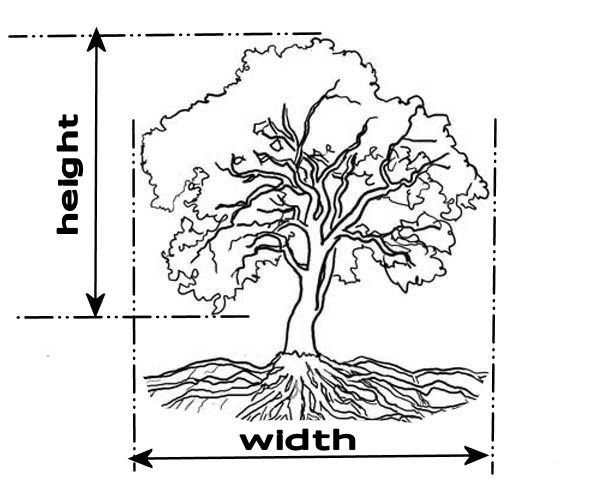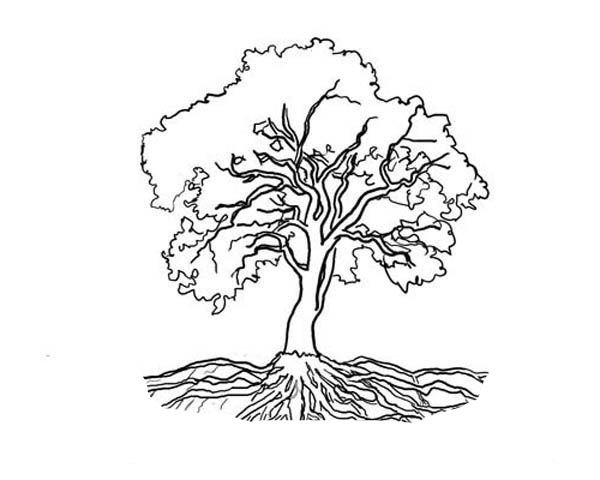
Water Considerations
for
Shrubs and Trees
for
Shrubs and Trees
Garden Tip
TB1110
TB1110
Technical Bulletin Series

|
Water Considerations for Shrubs and Trees |
|
Garden Tip TB1110 |
Technical Bulletin Series
|
|
Listen while reviewing
information and tables below
|
Proper irrigation planning and scheduling is one of the most important issues for plant health.
Spray emitters lose over 30% of the water before it enters the soil due to evaporation and wind.
Short irrigation run times (5 to 10 minutes) do not allow deep permeation of moisture. Only the surface
soil is moist which results in additional evaporative loss of precious water.
Also, in hot weather this surface moisture is gone before days end and the plant begins to
exhibit drought stress as it declines.
A technical advisor in a Nursery needs to ask enough questions before giving advice. Though the client may not understand why so many questions; it is the job of the consultant to reach through in order to discover or advise on these critical details. - Plant Canopy Size - Soil Composition - Gallons of Water in a single day - Days per Week / Month - Plant Water Tolerance / Preference The goal is deep and infrequent water. This benefits the plant as well as minimizing water consumption. Many landscape professionals have not been trained to understand the various aspects of matching an irrigation design to the soil and plant.
This Garden Tip discusses Shrubs and Trees, NOT Lawns. |
|
Understanding Plant-Canopy size  The watering tables below specify an amount of water in gallons to be applied per foot - of Plant Canopy Size To simplify; multiply the height by the width. This will approximate plant canopy size. Example; a 3 ft. wide and 2 ft. tall shrub has a 6 foot size canopy. |
|
Frequency of Watering vs. Quantity of Water. Know the difference.
Days per week (or month) represents "frequency", while "minutes of run time"
(indicating gallons of water) represents quantity. Change your frequency
of watering throughout the seasons, and attempt to leave the minutes
close to unchanged.
|
The following recommendations for appropriate typical watering
amount and intervals are not meant to be specific instructions.
These are provided to the reader as a convenience, in order to compare typical with their
individual situation. Soil, Sun, Wind, Slope and Plant type differ greatly, and so will the irrigation requirements. Those Gardeners who are often only looking for a starting point and general guidelines for irrigation will find these tables helpful. The Online Calculator (accessed at the bottom of the page) can facilitate a much more comprehensive analysis of all these factors which will help solve more difficult plant issues. |
HOW OFTEN SHOULD YOU WATER YOUR SHRUBS and TREES?
These recommendations are only typical - Conditions may differ for individual landscapes. Drought tolerant plants may often be watered less often, but generally will be healthy with regular schedules. Soil Composition is a CRITICAL consideration for watering frequency or interval. Soil type is not presented here due to complexity, but is addressed in the second table for water amount. The interval table, immediately below assumes an average drainage time of 40 to 60 minutes (see TB1472). Please consult with a trained irrigation and soil specialist to make certain proper watering is selected for your landscape. |
|
Typical Watering Frequency**
|
|
Winter F < 60 o 10 hour day |
Spring - Fall F < 80 o 11 hour day |
Summer F > 80 o 12+ hr day |
|
SMALL PLANTS 1-2 per week |
SMALL PLANTS 2 -3 per week |
SMALL PLANTS 3-5 per week |
|
INTERMEDIATE PLANTS and CONDITIONS ¥ 1 - 2 per week |
INTERMEDIATE PLANTS and CONDITIONS ¥ 2 - 3 per week |
INTERMEDIATE PLANTS and CONDITIONS ¥ 3 - 4 per week |
|
SHRUBS 1 - 2 per week |
SHRUBS 2 per week |
SHRUBS 2 - 4 per week |
TREES 2 per month |
TREES 1 per week |
TREES 2 - 3 per week |
|
DESERT PLANTS 1 - 2 per month |
DESERT PLANTS 2 - 3 per month |
DESERT PLANTS 1-2 per week |
|
** Watering frequency is estimated at a minimum preferred for plant health.
With adequate drainage, slightly more frequent irrigations will not cause problems
(as this decision must take into account all the various plants being serviced
by "one particular zone"). Exceptional weather (such at heat or wind) will cause
the soil to dry more quickly, necessitating more irrigations during that period.
These estimations are also based on soil with an average 30-to-50-minute drain-time. Use of the Garden Calculator Pro-I can reduce the complexity of these decisions. |
|
¥ Any plant in an area slightly sunnier than recommended, higher water consumer,
or located in faster draining soils will need a bit more regular irrigations than
those in more normal conditions. Check with your Plant, Soil and Irrigation Specialist.
|
HOW MUCH SHOULD YOU WATER YOUR SHRUBS and TREES? (how many minutes / gallons) Remember "how many minutes" varies with the drip emitter you use. Most are rated in gallons per hour. So, for convenience try to standarize to emitters that all have the same flow rate. Remember, the free online Garden Calculator Pro I, accessed below, asks only a few questions and specifies emitters and run time. Deep water doesn't evaporate and deep root systems are healthy! |
The size of a plant's root system is the critical factor in HOW MUCH
water to apply during an irrigation, and if the roots are not large
enough for the plant it will suffer. The Garden Calculator Pro-I can
quickly answer this for any plant you have, and of course soil composition
has a big impact too. As a rule of thumb, it will take about 0.5 gallons of
water for every square foot over the primary root system. Example: a rose
might have a 2 x 2 primary root system - therefore needs 2 gallons of water.
The better this moisture is spread throughout the root area - the healthier
the plant. The images below should help you get an idea of where the primary
root system should be.
|
 Water applied deep and wide  Water applied in multiple spots |
|
Typical Irrigation Cycle Watering Amount |
|
Hard Slow Draining minutes gallons / ft. |
Good Loamy Soil minutes gallons / ft. |
Sandy Fast Draining minutes gallons / ft. |
|
SMALL PLANTS 30 - 60 mins 0.25 gal/ft |
SMALL PLANTS 15 - 30 mins 0.50 gal/ft |
SMALL PLANTS 10-30 mins 0.80 gal/ft |
|
INTERMEDIATE PLANTS ¥ 45 - 60 mins 0.40 gal/ft |
INTERMEDIATE PLANTS ¥ 20 - 45 mins 0.80 gal/ft |
INTERMEDIATE PLANTS ¥ 15 - 30 mins 1.2 gal/ft |
|
SHRUBS / TREES* 45 - 60 mins 0.35 gal/ft |
SHRUBS /TREES* 20 - 45 mins 0.75 gal/ft |
SHRUBS /TREES* 15 - 30 mins 1.0 gal/ft |
|
Drought Tolerant** SHRUBS / TREES 0.30 gal/ft |
Drought Tolerant** SHRUBS / TREES 0.60 gal/ft |
Drought Tolerant** SHRUBS / TREES 0.90 gal/ft |
|
DESERT PLANTS 0.25 gal/ft |
DESERT PLANTS 0.40 gal/ft |
DESERT PLANTS 0.70 gal/ft |
In order to determine runtime minutes, the above table is an estimation
based on using slow rate "one gallon per hour" drip emitters. Hard soil
absorbs water very slowly. The slower moisture is applied - the deeper it
permeates into the soil. This provides larger root systems and longer lasting moisture.
If you are utilizing high flow rate sprays or emitters, the total gallons will remain the same as long as this does not cause puddling and run-off. The amount of time the emitters would run will obviously be changed according to the flow rate of the emitters used. ¥ A plant in an area slightly sunnier than recommended, or a higher water consumer. Here the amount of water needed is the same as a traditional plant, but varies according to soil type. The frequency that is needed for application is substantially different. See TABLE 1. * The quantity of gallons for any SHRUB or TREE is also going to vary according to the size of its' CANOPY or SPREAD. Here the Canopy refers to the height and width (whichever is greater) of the Tree, and spread refers to the width and area of a shrub or groundcover type plant. This in turn determines the square feet area of soil under that plant needing irrigation. ** The quantity of gallons for any "DROUGHT TOLERANT" Shrub or Tree is also going to vary according to the size of its' CANOPY or SPREAD, but as this type of plant can tolerate a shallower root system the quantity of water per sq ft. is slightly less. The sq ft. area requiring irrigation can also be reduced. Desert Plants Are comprized of succulents, cactus and highly drought tolerant plants types. For "Moderate" water use shrubs and trees consider this area to be about 75% the size of the canopy. For "Desert or Drought tolerant" plants consider this area to be about 40 to 50% the size of the canopy. Example: A drought tolerant tree with a canopy that spread 10 ft. in width would have approximately 50 sq. ft. root area.
Use the Garden Calculator Pro-I or check with a Nursery Irrigation Specialist if you need help calculating. |
With all your shrubs and desert plants larger than 1 foot in height,
you should have a minimum of 2 to 3 drips on each plant. This makes
certain that you have adequate coverage around the root system, and not
just on one side.
|
| Soil Composition type. Clay, sand and loam all have different water holding capacities and drainage rates. Most of the landscapes in the Desert Southwest are very slow to drain, but not all! Know the characteristic of your soil, and in particular the soil where you intend to plant. Slow draining soils should be watered 'less often'. |
|
Using this Watering Guide Remember that watering frequency and duration is based on many variables. Things like time of year, soil type (sand, clay or loam) and plant location (sun, shade or slope) all play a part in your decision. For best results, get in touch with your soil and experiment! |
| Location. On a slope? Most slopes will drain quite a bit faster, while others (due to clay) may not. Does water run to this location, or away from it. Does this area get extreme heat and reflected sun in the summer? All of these things will affect water requirements. If plants in a unique location do not have a different zone or valve than the other, you will very likely have a hard time keeping them all healthy. |
| Cover under canopy of other plant. Mulch insulates the soil and keeps it from drying out as quickly as it would under normal conditions. Proper use of mulch can minimize the water frequency requirements. |
| Different Seasons. Plants need water less often in the winter months. Most often in the summer. Try to leave the quantity of water, or minutes you run your drips, mostly constant throughout the year. This helps to keep soil salts build-up to a minimum, and helps to develop and maintain deeper roots. The root system doesn't get smaller when it's cold. |
| Small flowering plants and vegetables are often on the same zone as the lawn and so watered the same as lawn. If this works for you and you're happy with the results, then stick with it. If you don't have excellent drainage in your beds, frequent watering will cause the soil to become soggy causing chlorosis and root rot. Overhead sprays will cause problems like misshapen fruit, blossom rot, stem rot, leaf spot and other fungus problems, especially in hot weather. It also encourages plant pests like aphids. Plants with large leaves may shed the water and prevent the roots from getting a sufficient amount of moisture. |
|
Shrubs and trees have (or need to have) a deeper, more extensive root system
and different water requirements. If possible have them on a different valve
or time zone in your irrigation system. Sprinklers can work but drip irrigation
is a much more efficient and less costly way to care for your landscape plants.
A good rule of thumb is 1-2 gallons of water for smaller accent plants, 3-5 gallons
for larger shrubs and 10 gallons of water for a 15 gallon plant each time you water.
Boxed trees will need even more water but it doesn't have to be applied every day.
Planting a new boxed tree requires "deep watering" otherwise much of the root system
will die off. Try Using the Garden Calculator Pro I
|
| Desert plants need thorough, widely spaced watering to look their best. Follow the Advice Sheet for new plantings and use the same amounts recommended for shrubs and trees above. When established, once a week, even less in winter, will work well for most desert trees and shrubs. Cacti need water even less often. A good soaking every 2 weeks should be sufficient. |
| Container plants have small amounts of soil and generally need more water than those in the landscape, especially during our hot summers. If watering by hand, keep a close watch on your plants. Low humidity and hot winds dry them out quickly. A one-inch layer of bark or coarse mulch will conserve moisture in these conditions. On the other hand, if there is standing water empty your saucers and drain trays. If the pot remains in standing water, the soil will become waterlogged and your plant will suffocate. Drip emitters and soaker lines can be adapted to hose bibs on porch or patio and do a good job on container plants. |
| Consider switching to dripper lines, or drip irrigation. Consult a Nursery Irrigation Specialist for specific information depending on your situation. In any event, applying water directly to the root zone and using surface mulches will reduce watering frequency for most flowers and vegetables. Winter flowers need even less since soil evaporation is greatly reduced by colder temperatures. Keep your soil evenly moist for the first few weeks after planting so these shallow-rooted plants can become established. |
|
If you decide on drip, you have made a great choice for the long term health
and ease of maintenance for your plants. You will need to determine how many
emitters and where to place them. In addition to this the run time for
irrigation will need to be established in order to provide the right amount
of moisture and adequate time for that water to permeate the soil.
This decision can not properly be made without knowledge of the soil
composition in the area.
The Garden Calculator Pro I
really helps make this easy |
|
The Garden Calculator Pro-I (a free online tool) was designed to help you or your landscape professional
evaluate your soil and the resulting emitter placement and emitter density.
This irrigation and soil calculator takes the necessary parameters into account and returns answers that will greatly assist in the long-term health of your plants. If this type of investigation is beyond what you personally would be interested in doing, it certainly is well within the scope of any dedicated landscape professional to utilize and gain success from the application. |
|
As you can see, watering in desert climates is truly quite a science.
It's not as simple as it might seem. Understanding the water needs of different
plant groups and the nature or composition of your soil will help substantially
towards success. Lastly, please choose the right irrigation system for your
landscape and learn how to run it correctly. Don't let it run you!
|